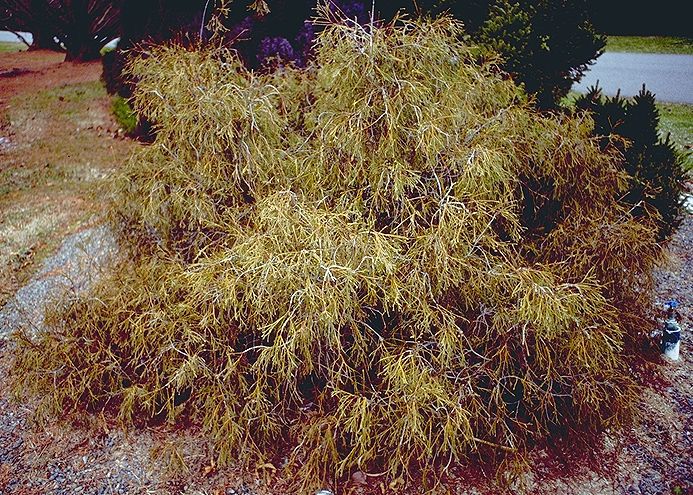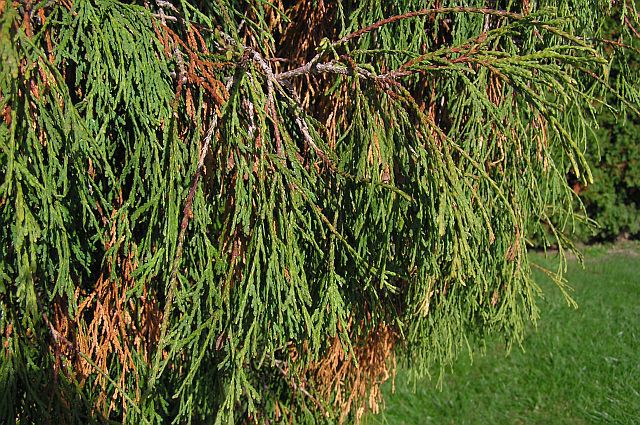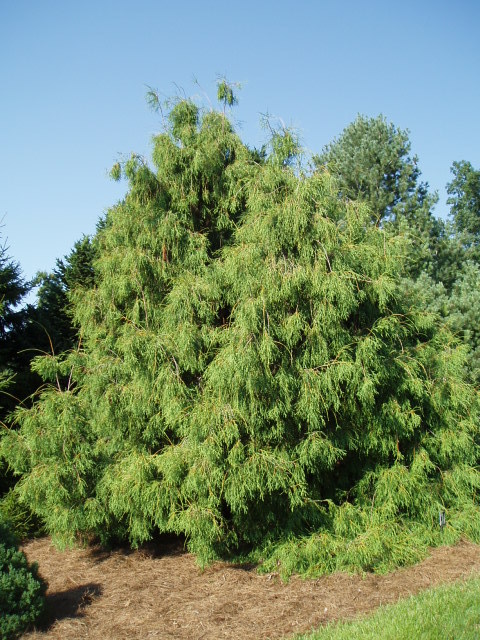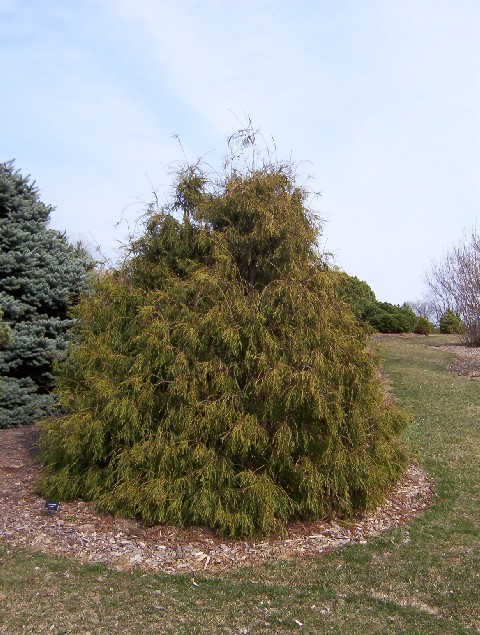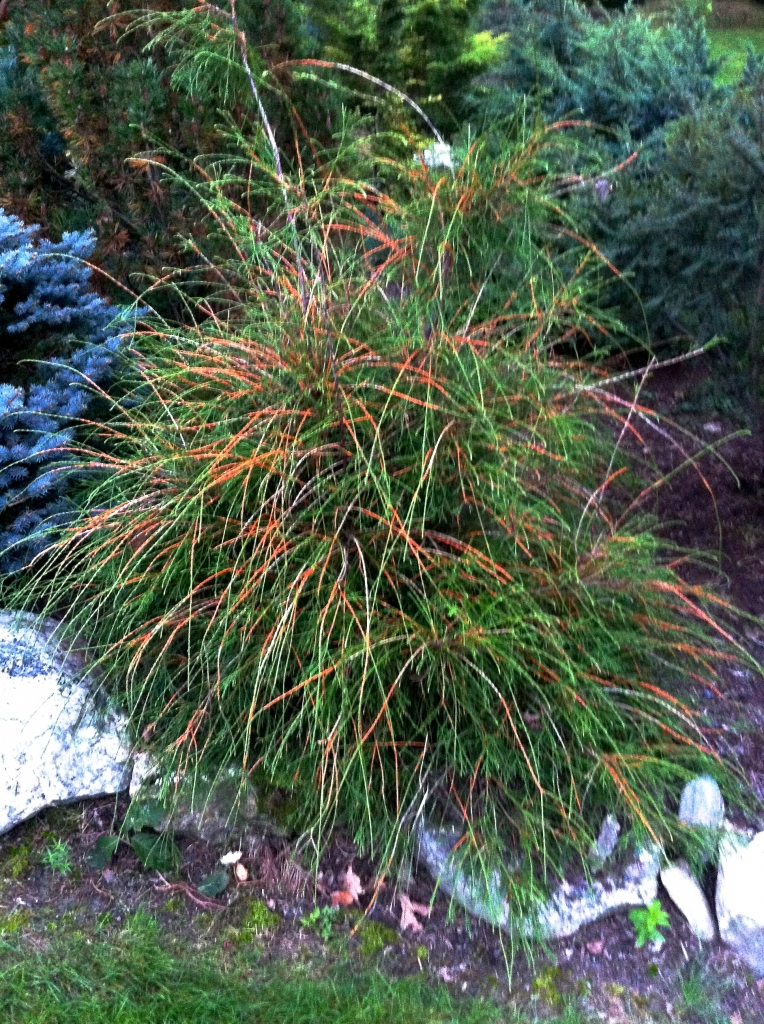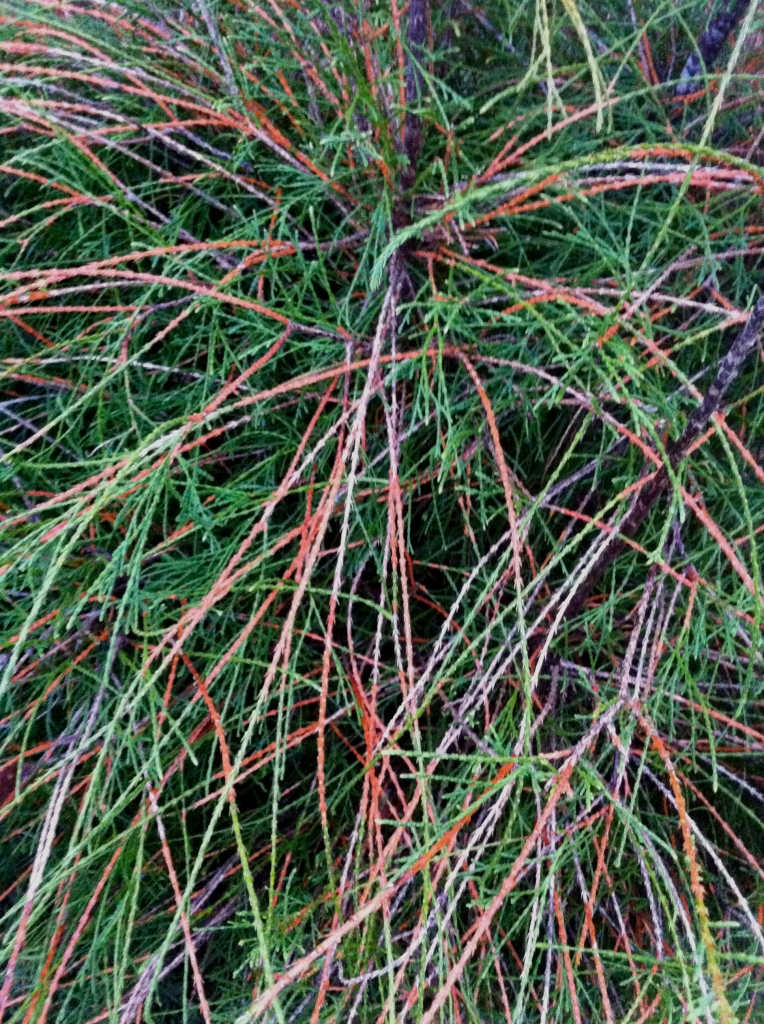[Excerpt from Dwarf & Unusual Conifers Coming of Age A Guide to Mature Garden Conifers
By Sandra McLean Cutler]
long trailing branchlets with rich green foliage pressed against tight to stem creating a cord-like effect; distinctive orange-brown arching branches; amber winter foliage in colder climates; low sprawling rounded form; full sun.
